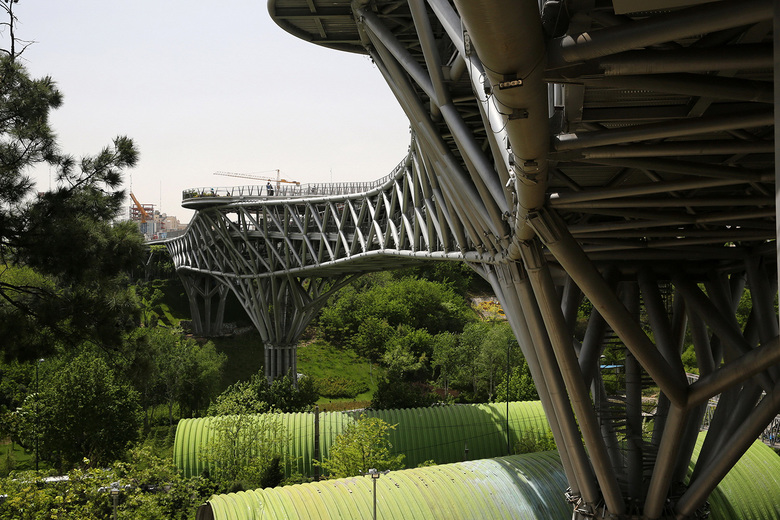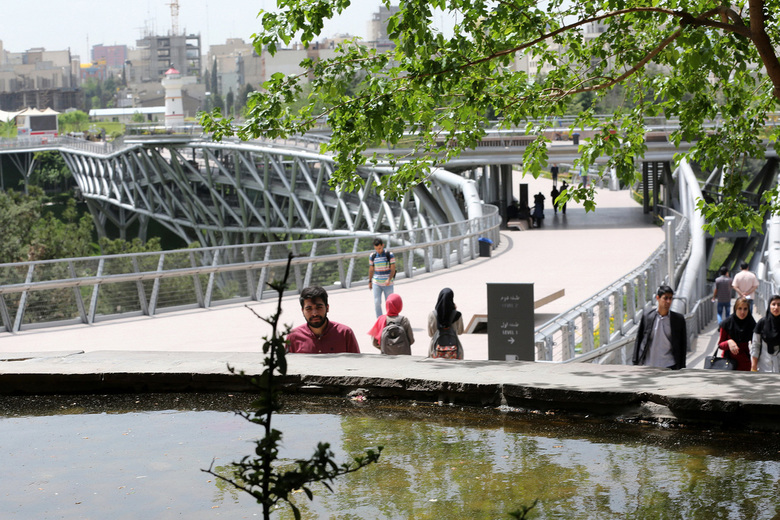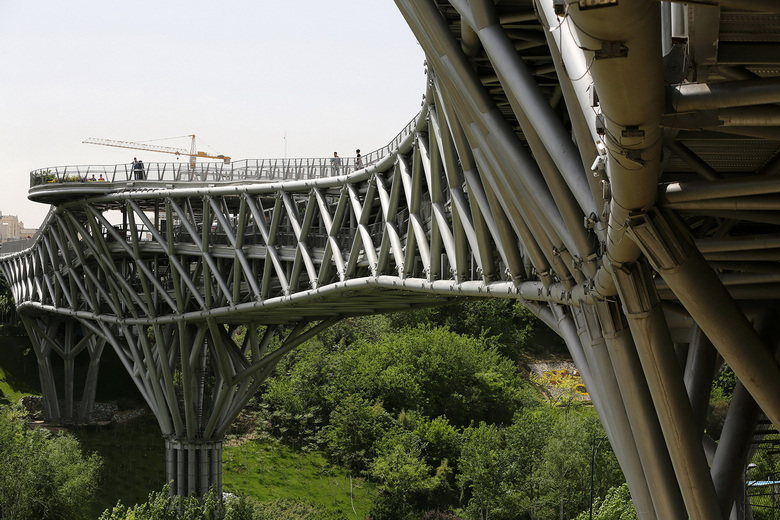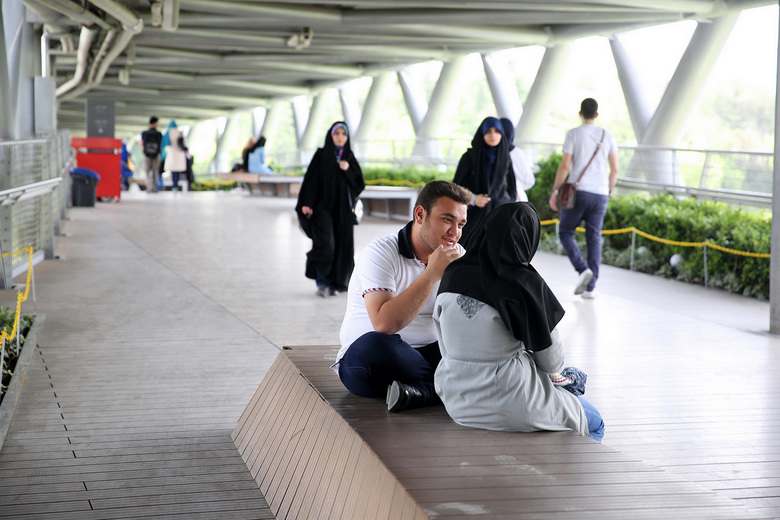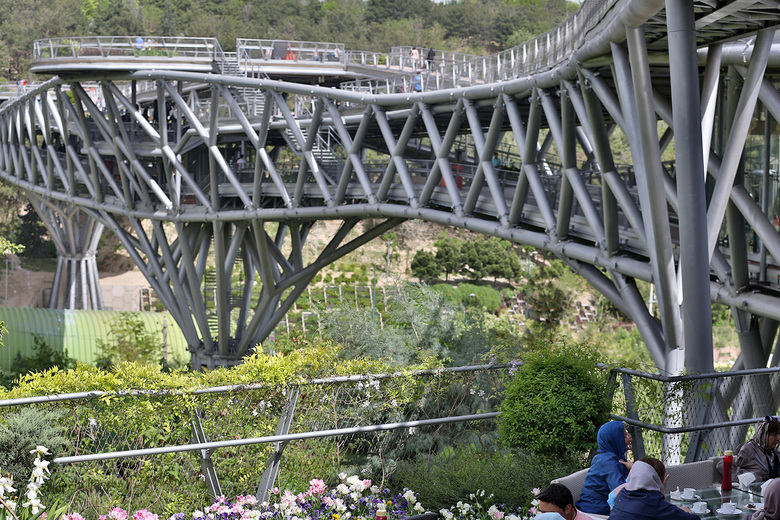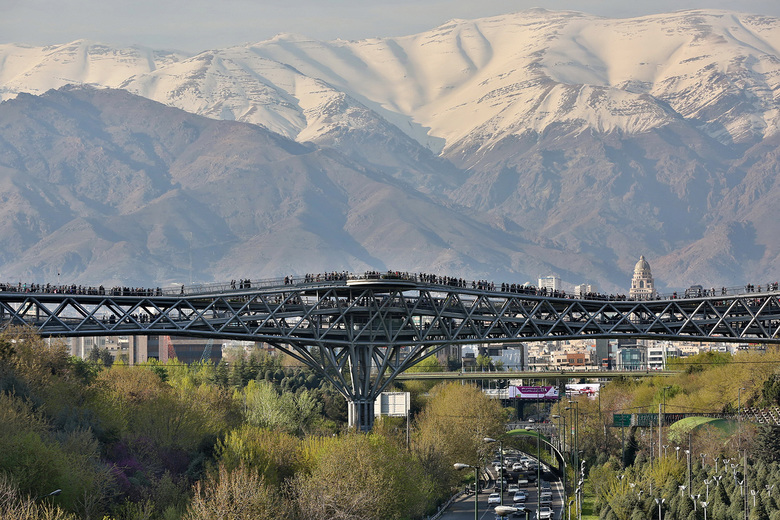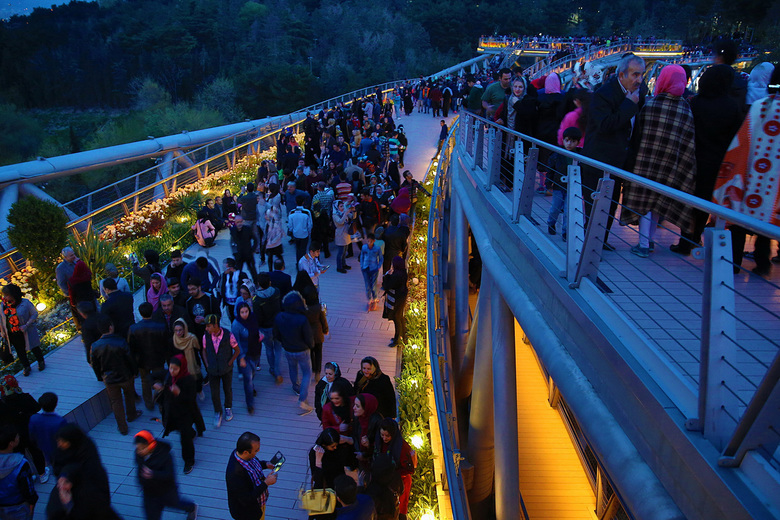2016 Aga Khan Award for Architecture
Tabiat Pedestrian Bridge
Diba Tensile Architecture / Leila Araghian, Alireza Behzadi | 7. outubro 2016
The aim of this bridge was to invite users to walk through and retain them for sitting and viewing experiences. (Photo: Aga Khan Trust for Culture / Barzin Baharlouie)
A multi-level bridge spanning a busy motorway has created a dynamic new urban space in this recipient of a 2016 Aga Khan Award for Architecture.
Tabiat Pedestrian Bridge spans a busy highway to connect two parks in a city with a very dense urban fabric and mostly utilitarian architecture. More than a point of connection between two discrete green zones, the bridge is a popular gathering place for the people of Tehran, offering numerous seating areas over its three levels and restaurants at either end. Like many such green spaces within urban areas, it has come to serve as a locus of identity for the city and its inhabitants.
The bridge combines between the structural intricacy to hold the whole monumental structure with a design outcomes and a set of decks that foster human activities and motions. (Photo: Aga Khan Trust for Culture / Barzin Baharlouie)
The tree-shaped columns that support Tabiat Pedestrian Bridge echo the forms within the adjacent parks. Their locations were also carefully chosen to minimise the need to fell trees. And where the bridge meets Abo Atash Park, the structure is left open in three places to allow the trees to grow through it, creating the sense of one continuous green space.
The project espouses the topography of the sloppy site. The hills and their curves oscillate the structures and surfaces of the bridge and transmit their topographic lines to the other park on the other side. (Photo: Aga Khan Trust for Culture / Barzin Baharlouie)
Given the complex curving form of the three-dimensional truss, each of the steel elements had to be cut in a different shape, and this was carried out partly by CNC machine and partly by printing the unrolled shape from the 3D model. The tubes were cut, sandblasted and painted with primer in the workshop, then delivered to the site. During the whole process of construction, the flow of traffic on the highway continued uninterrupted.
First level is completely covered by the second level, providing shade during the sunny days and during the rainy or sunny condition people mainly use this level. This makes the bridge to be used in almost any climatic condition. (Photo: Aga Khan Trust for Culture / Barzin Baharlouie)
Rather than focusing on the experience of those viewing the bridge from afar, the design is characterised by an inward-looking approach: the sequences of spaces are all centred around the users. The various deck levels are connected by continuous ramps at the bridge’s southern end: the decks themselves are covered in Resysta, an imported fibre- reinforced hybrid material made from rice husks, common salt and mineral oil. The same material – which is both recyclable and weather-resistant – was used for the seating.
Usually considered as structural projects, this bridge has a more architectural approach with its multiple paths and inviting spaces; it became one of Tehran 's architectural destinations. (Photo: Aga Khan Trust for Culture / Barzin Baharlouie)
During the night there are two types of interior lighting. One is the continuous lighting inside the handrails and the other comes from ball-lights inside the green space. The colourful exterior lighting was done by the client without the approval of the designers and it hinders the original design look at night. (Photo: Aga Khan Trust for Culture / Barzin Baharlouie)
View from the south towards the Bridge and Alborz Mountains in the background. (Photo: Aga Khan Trust for Culture / Barzin Baharlouie)
Contrary to typical bridges, seating and green areas all along this bridge make it a place to stay rather than just to pass, therefore a popular public destination by itself. (Photo: Aga Khan Trust for Culture / Barzin Baharlouie)
With its numerous benches and seating areas, restaurants and cafes, the bridge nurtures greatly the pedestrian connection. (Photo: Aga Khan Trust for Culture / Barzin Baharlouie)
View at dusk. The bridge becomes a public space for people to gather, walk, interact and entertain. (Photo: Aga Khan Trust for Culture / Barzin Baharlouie)
The structural concept resulted in a dynamic three dimensional truss with two continuous deck levels; this provided a lower level which is covered and therefore usable in all seasons. (Photo: Aga Khan Trust for Culture / Barzin Baharlouie)
Top Floor Plan
